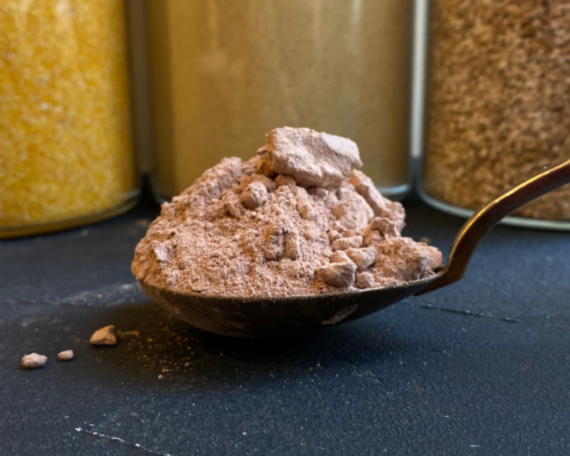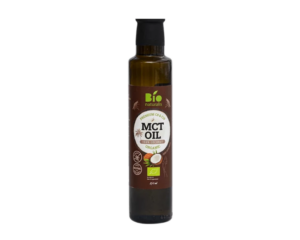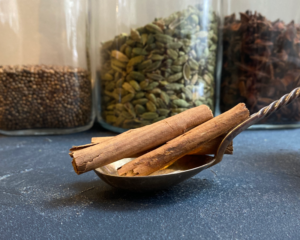Organic Ceremonial Cocoa Powder RAW
From 9.10€
Cocoa originated in Central America. The Maya, Aztecs and other peoples consumed cocoa drinks similar to tejate or pozole, which are still produced in Mexico and Central America.
These ancient civilisations not only consumed cocoa as a beverage, but also considered it sacred, using it in rituals and ceremonies. The cocoa bean was so highly valued that it was used as currency and took a central place in cultural and spiritual practices. Today, the tradition of ceremonial cacao continues to flourish as people around the world rediscover its potential for emotional healing and spiritual connection.
Features
Cocoa beans contain compounds such as phenylethylamine (PEA), often referred to as the “love molecule” because it can stimulate the release of endorphins and dopamine in the brain, creating feelings of happiness, pleasure and even mild euphoria. This can contribute to a better mood and well-being.
PEA has a mild stimulant effect which may increase alertness, it may help improve concentration, and it will be useful for tasks that require mental clarity.
Because of its role in promoting feelings of pleasure, PEA has been associated with aphrodisiac effects, enhancing romantic and sensual experiences.
Cocoa is an excellent source of iron, magnesium, phosphorus, calcium, zinc, copper, manganese and selenium. High levels of potassium help to maintain proper blood pressure and muscle tone.
Attention
Cocoa naturally contains caffeine and theobromine. Although lower than coffee, those sensitive to caffeine may experience anxiety, nervousness or insomnia.
Excessive consumption of cocoa can cause digestive problems, including nausea or diarrhoea and headaches,
Cocoa may interact with certain medications, especially antidepressants, so be careful.
Usage
30 g of cocoa per day is more than enough. It is very important to start with a smaller amount and gradually increase to find the optimal dose, as individual reactions can vary greatly.
Cocoa is generally safe to consume during pregnancy, but large portions are not recommended. It is important to monitor your cocoa intake.
Hot chocolate
Dissolve the cocoa powder in a hot bowl and blend in a blender with warm (not boiling) water.
It can be flavoured with powdered coconut milk or a vegetable drink such as oat, almond or coconut.
Sweeten with your favourite sweetener and experiment with spices – vanilla, cinnamon, cardamom, cayenne pepper.
Make chocolate at home
Dissolve the cocoa powder in a hot bowl with the coconut milk powder or, say, peanut butter (not with water or vegetable milk) and pour into the moulds. Once cooled in the fridge, you can enjoy high-quality chocolate.
Sprinkle on breakfast porridge, smoothie or salad.
Sources:
https://cacaolaboratory.com
https://www.sciencedirect.com
https://www.thechocolatejournalist.com
NOTE. The information contained herein should not be construed as a recommendation for treatment or other health issues. We encourage you to make personal decisions about your personal health, taking into account a wide range of sources of information.
Organic cocoa powder RAW 100%
Criollo (70%) and Trinitario, Forastero (30%)
-
-



